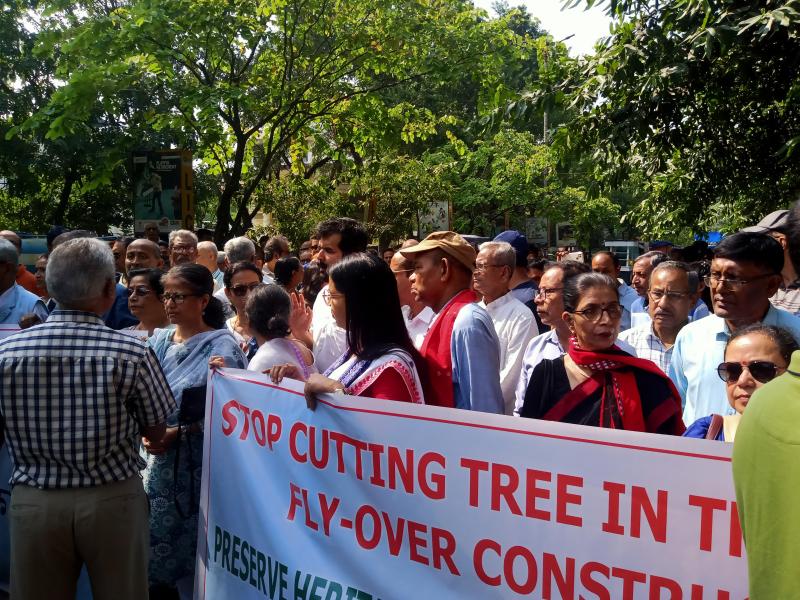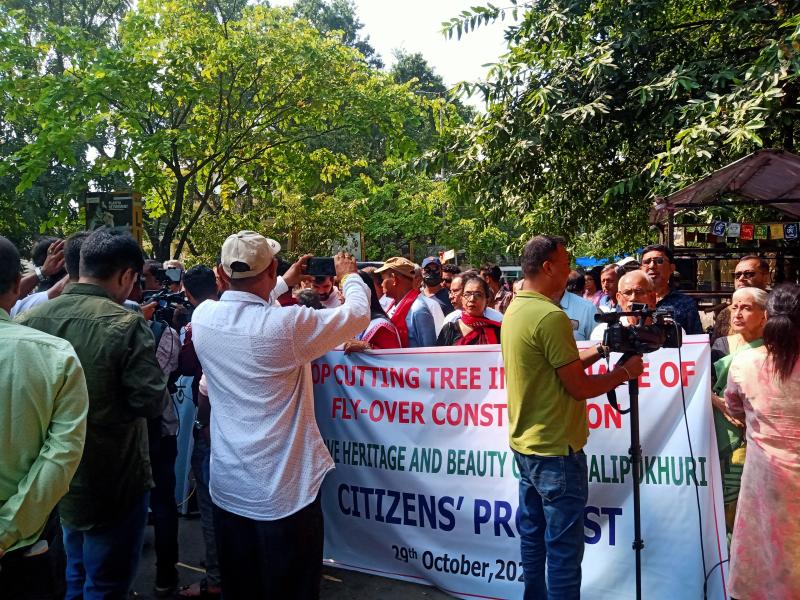Assam is a comparatively underdeveloped state in India, plagued by insurgency, illegal immigration, rising income inequality, and a lack of employment opportunities. Large structures, such as flyovers, are often seen by many as symbols of development. Some people view the numerous cars, traffic congestion, and flyovers in cities like Dubai, Delhi, or Bengaluru—constructed ostensibly to reduce congestion—as markers of prosperity. Politicians and contractors capitalize on this sentiment to push for more flyovers in cities, often with little concern for environmental impacts. However, people have observed the large-scale felling of trees and its effects on the climate, such as reduced rainfall, longer summers, and shorter winters.
In Guwahati and across Assam, trees have been felled for flyovers and other infrastructure projects for years, with public protests largely ignored and required impact assessments often bypassed. Dighalipukhuri, with its historical, environmental, and cultural significance, resonated deeply with many due to its centuries-old trees and cherished avian fauna. The marking of these trees for felling ignited public opposition. Frustration over the authorities’ disregard for the environment, often in the name of development, further motivated people to protest.

The demonstration that began on October 29 had garnered support from across the city, state, and even from people worldwide, many of whom voiced their opposition on social media or joined the on-ground protests. Protestors included senior citizens, students, environmentalists, urban planners, members of the LGBTQI+ community, legal practitioners, academics, teachers, artists, and people of all ages, genders, educational backgrounds, and professions. Inspired by the Chipko movement of the 1970s, those protesting at the site organized night vigils to protect the trees, fearing they might be cut under the cover of darkness.
Musicians, actors, artists, mime artists, poets, and ordinary citizens came to the Dighalipukhuri protest site to show solidarity and support for the movement. People had signed a banner as a show of solidarity. The Dighalipukhuri movement has become a powerful symbol of hope, demonstrating that people can collectively stand against injustice and envision a better future. This movement has even inspired residents from other parts of the city to protest unwarranted tree felling in the name of development.

The protest has now evolved into a broader movement to raise awareness about environmental conservation, biodiversity, citizen rights, urban planning concepts, waste management, climate change and community building. Activities such as bird watching, night walks, tree planting, and cleanup drives are being organized to engage people and highlight the importance of these concepts. Officials from ATDC and GMC supported and participated in the latest cleanup drive inside Dighalipukhuri Park. These activities help in developing better communication and engagements between people.
We need to recognize this as a systemic issue and use this opportunity to find solutions or establish policies so that citizens do not need to protest each time to have their voices heard, and authorities can focus on productive work rather than “firefighting” protests. To address this, I propose four steps for the authorities, each of equal importance. Many of these steps are required by various policies but are often not followed. The data collected through these steps should be made publicly available for scrutiny:
Simultaneously, we must make our cities liveable, clean, and accessible for everyone by following sustainable development practices. We need to create public spaces in collaboration with local communities, rather than imposing top-down ideas based on personal preferences. Citizen engagement activities as mentioned earlier are expected to develop connections between communities and government agencies. Practicing participatory democracy will pave the way toward participatory development.